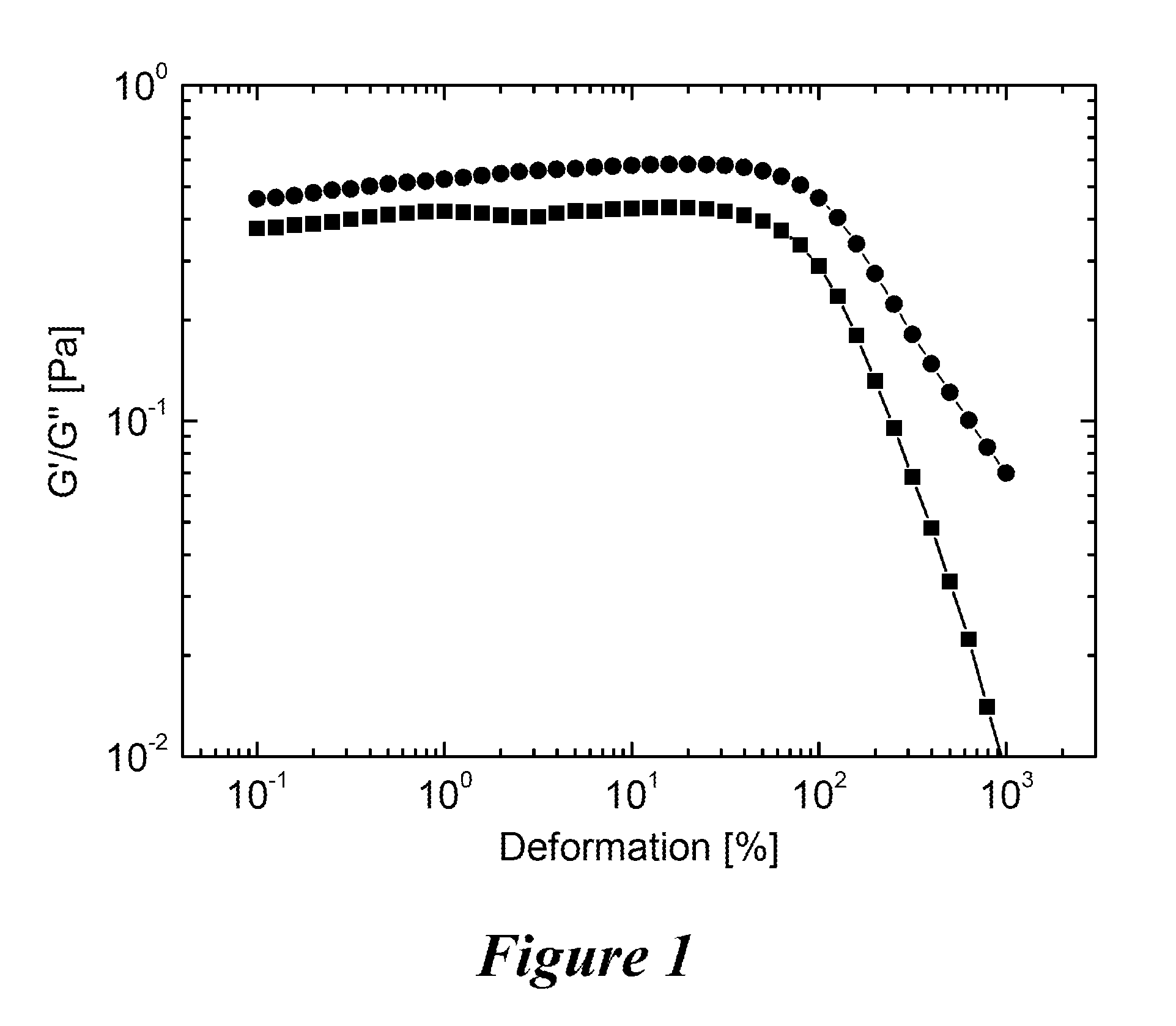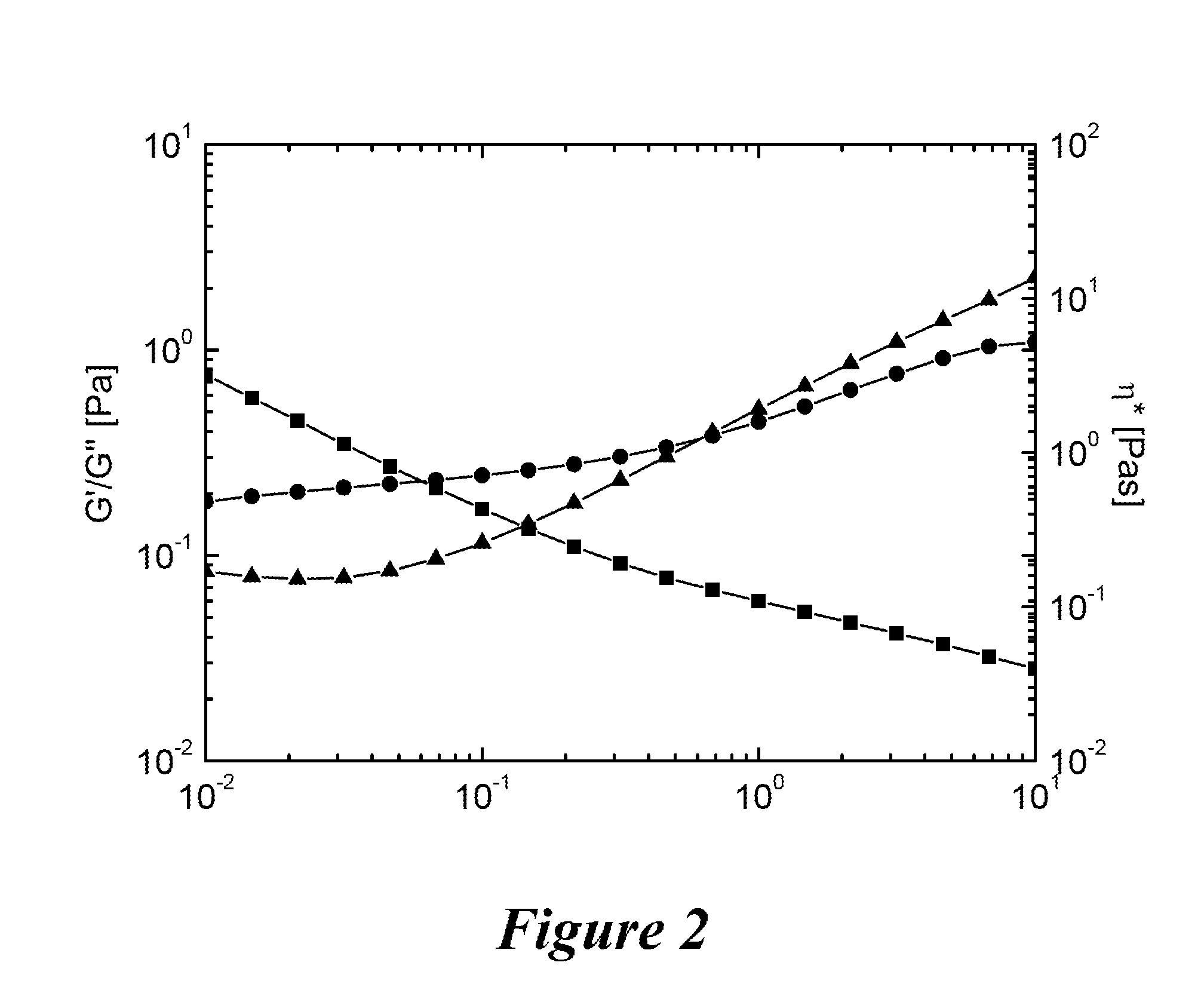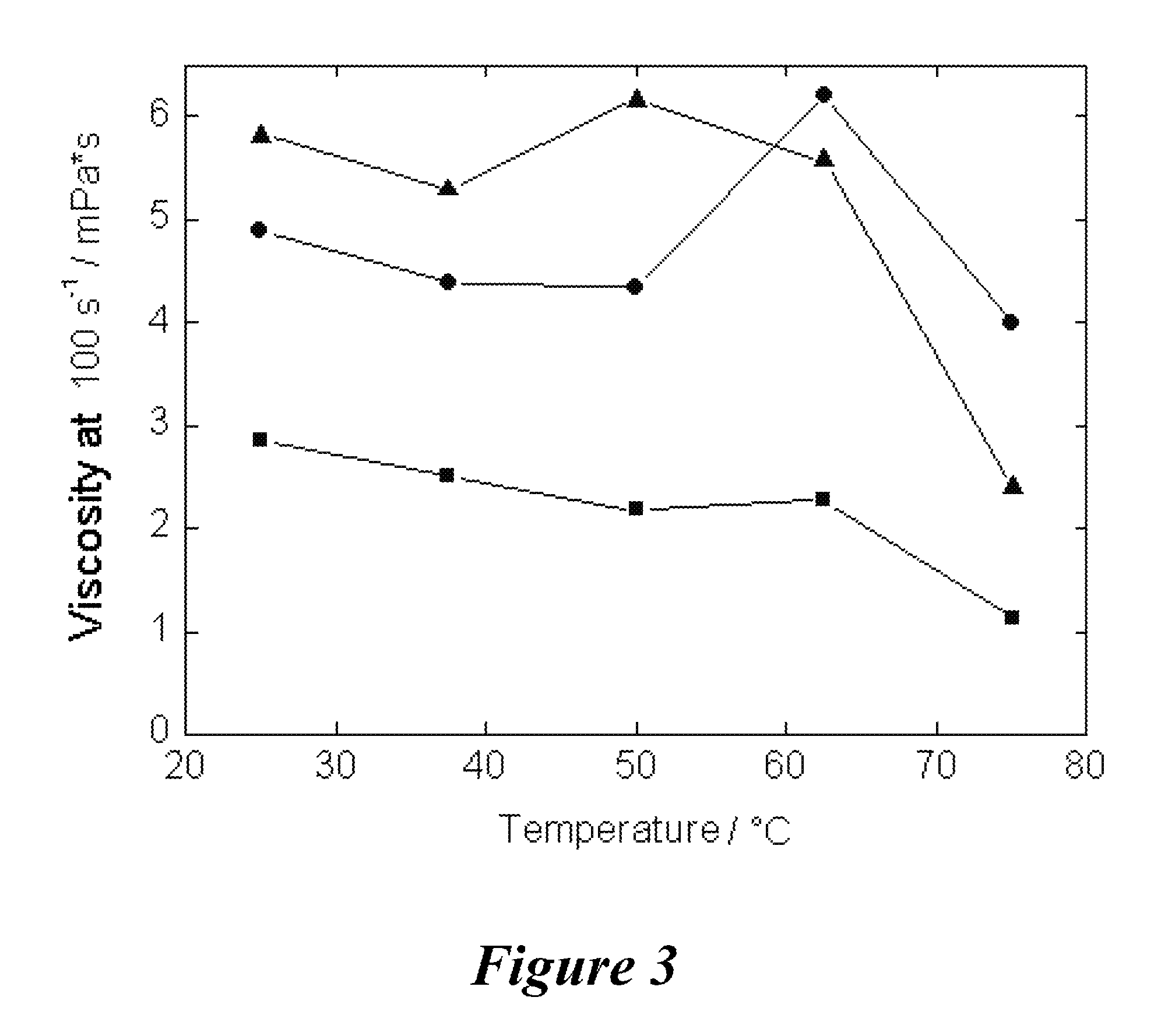Derivatives of tris(2-hydroxyphenyl)methane, their preparation and use
a technology of tris(2-hydroxyphenyl)methane and derivatives, which is applied in the field of derivatives of tris (2hydroxyphenyl)methane, can solve the problems of loss of viscoelasticity, increase in viscosity of surfactant solution, and loss of viscoelasticity
- Summary
- Abstract
- Description
- Claims
- Application Information
AI Technical Summary
Benefits of technology
Problems solved by technology
Method used
Image
Examples
synthesis example 1
Synthesis of tris(3,5-di-tert-butyl-2-hydroxyphenyl)methane
[0092]Tris(3,5-di-tert-butyl-2-hydroxyphenyl)methane (CAS No. 143560-44-5) was prepared by means of the process described by M. B. Dinger, M. J. Scott, Eur. J. Org. Chem. 2000, 2467. Tris(3,5-di-tert-butyl-2-hydroxyphenyl)methane is hereinbelow also abbreviated as TRIS.
synthesis example 2
Synthesis of TRIS[(—CH2—CH2—O)11H]3 by ethoxylation of TRIS with 33 EO units
[0093]In a 2 l autoclave, TRIS (100 g) suspended in toluene (150 ml) is admixed with potassium tert-butylate (3.0 g). Flushing with N2 is carried out three times, a preliminary pressure of ca. 1.3 bar of N2 is established and the temperature is increased to 119-121° C. Ethylene oxide (231 g) is metered in such that the temperature remains between 119° C.-130° C. The mixture is then afterstirred for 16 h at 90° C., flushed with N2 and cooled to 70° C., and the reactor is emptied. The basic crude product is neutralized with the help of standard commercial Mg silicates, which are then filtered off. This gives 263 g of intermediate, which has an OH number of 105.9 mg / g. In a second step, 239 g of the intermediate obtained in this way are admixed in a 2 l autoclave with potassium tert-butylate (1.5 g). The system is flushed three times with N2, a preliminary pressure of ca. 1.3 bar of N2 is established and the te...
synthesis example 3
Synthesis of TRIS[(—CH2—CH2—O)11H]2[(—CH2—CH2—O)11—SO3Na] by Sulfation
[0094]The product TRIS[(—CH2—CH2—O)11H]3 synthesized in Example 2 is dissolved in dichloromethane (45 g) and cooled to 5-10° C. Then, chlorosulfonic acid (2.12 g) is added dropwise such that the temperature does not exceed 10° C. The mixture is stirred for 1 h at 10° C., then overnight at room temperature, before the above reaction mixture is added dropwise to an aqueous NaOH solution (50%, 1.98 g) at max. 10° C. The dichloromethane is removed under gentle vacuum on the rotary evaporator at 30-45° C. The product is characterized by 1H-NMR and the water content of the solution is determined (ca. 60%).
PUM
| Property | Measurement | Unit |
|---|---|---|
| temperature | aaaaa | aaaaa |
| pressure | aaaaa | aaaaa |
| pressure | aaaaa | aaaaa |
Abstract
Description
Claims
Application Information
 Login to View More
Login to View More - R&D
- Intellectual Property
- Life Sciences
- Materials
- Tech Scout
- Unparalleled Data Quality
- Higher Quality Content
- 60% Fewer Hallucinations
Browse by: Latest US Patents, China's latest patents, Technical Efficacy Thesaurus, Application Domain, Technology Topic, Popular Technical Reports.
© 2025 PatSnap. All rights reserved.Legal|Privacy policy|Modern Slavery Act Transparency Statement|Sitemap|About US| Contact US: help@patsnap.com



